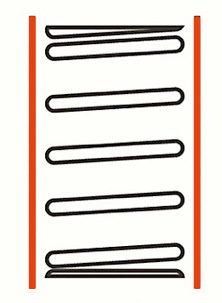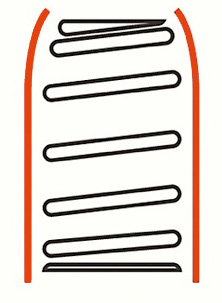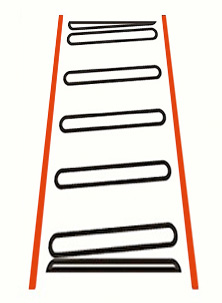If there's any component in an engine that gets a hammering, it's the valve spring. With cam profiles becoming increasingly more aggressive, valve springs have had to evolve in order to cope with the stress placed upon them.
What does a valve spring do?
What is the job of a valve spring? To close a valve? To keep components in contact with the camshaft lobe? Prevent valve float? The best way to look at the role of a valve spring is to maintain control over the entire valve train.
Extreme demonstration of Valve Bounce/Float
Valve Bounce
Valve spring pressure must be strong enough to close the valve and stop it bouncing off of the valve seat. When an engine exhibits valve bounce, the dynamic compression is lowered which results in a loss of power output. It can also cause valves to fail or even valve to piston contact.
Valve Float
Valve float occurs when the valvetrain gear loses contact with the camshaft lobe. Depending on the setup of the valvetrain, lifters, pushrods, rockers and valves may lose contact if the open spring pressure is inadequate. Open spring pressure is critical because in needs to oppose the force applied by the inertia of the valvetrain. If this inertia overcomes the force of the spring, it loses it's ability to keep the valvetrain following the profile of the cam lobe.

Cylindrical Springs
Basic valve springs are a single peice, cylindrical shaped spring with the ends ground flat so they sit flush on the spring seat and retainer. In performance applications, this design rarely provides the amount of load required to sufficiently control valvetrain function. This can be due to a number of factors including the lift of the cam profile as well as the rpm of the engine.
Performance camshafts require higher spring rates, which is the amount of weight required to compress the spring at a given distance. A number of things affect the spring rate such as the overall spring diameter, spring coil diameter and the number of coils. Increasing the spring coil diameter will increase the spring rate, while increasing the overall spring diameter or the number of coils will decrease the spring rate.
In the event a single spring is not able to provide the desired spring rate, additional springs can be added creating double or even triple springs. Double and triple springs are common for performance applications because of the high loads multiple springs are able to provide.

Beehive Springs
Another important factor when determining spring requirements for an engine is weight. The heavier something is, the more force it takes to stop the object when it is in motion. Therefore the valve spring must overcome the inertia of the valvetrain components as well as the movement of it's own coils. Lighter componentry requires less spring force at a given RPM to maintain control.
The Beehive spring is generally alot lighter than it's cylindrical brother allowing higher RPM and less load requirements placed on the spring. In a Beehive spring the top coils are wound tighter than the rest of the spring, giving it a shape like....you guessed it, a beehive!

Conical Springs
One of the newest designs of valve spring is the conical spring. A conical spring progressively reduces in diameter from the seat of the spring up to the retainer. Besides the reduction in weight that the conical spring shares with the beehive spring, conical springs deliver a higher natural frequency then that of companion springs.
What does this mean exactly?
For those of you who play with oscilloscopes on a regular basis will know that frequency is the number of oscillations that occur over a given time unit. Whenever a valve spring is compressed a vibration travels through the spring, from one coil to the next. When the frequency of the outside force compressing the valve spring is close to or matches the frequency of the spring, a resonance occurs that dramatically increases the amplitude of vibrations induced in the spring.
Increasing the frequency of a valve spring raises the valvetrain RPM limit while at the same time reducing resonance issues. Spring oscillations are also reduced due to the progressive frequency of each coil. The coils of the conical spring not only differing in diameter, but the pitch or spacing from coil to coil varies, resulting in a progressive frequency. This provides a natural damping effect.
Spring Material
On top of improvements to spring design as mentioned above, the material used in the manufacture of these springs has improved drastically over the years. Valve springs are generally iron based with different alloys added. The key elements added to valve springs are chromium and silicon as well as vanadium and nickel. Each element is added to the valve spring with the intention of altering it's properties such as fatigue resistance and durability.
That concludes our valve spring write-up! What did you think? Have any more Questions?
Let us know in the Mechanic.com.au Private Facebook Group (Members Only)